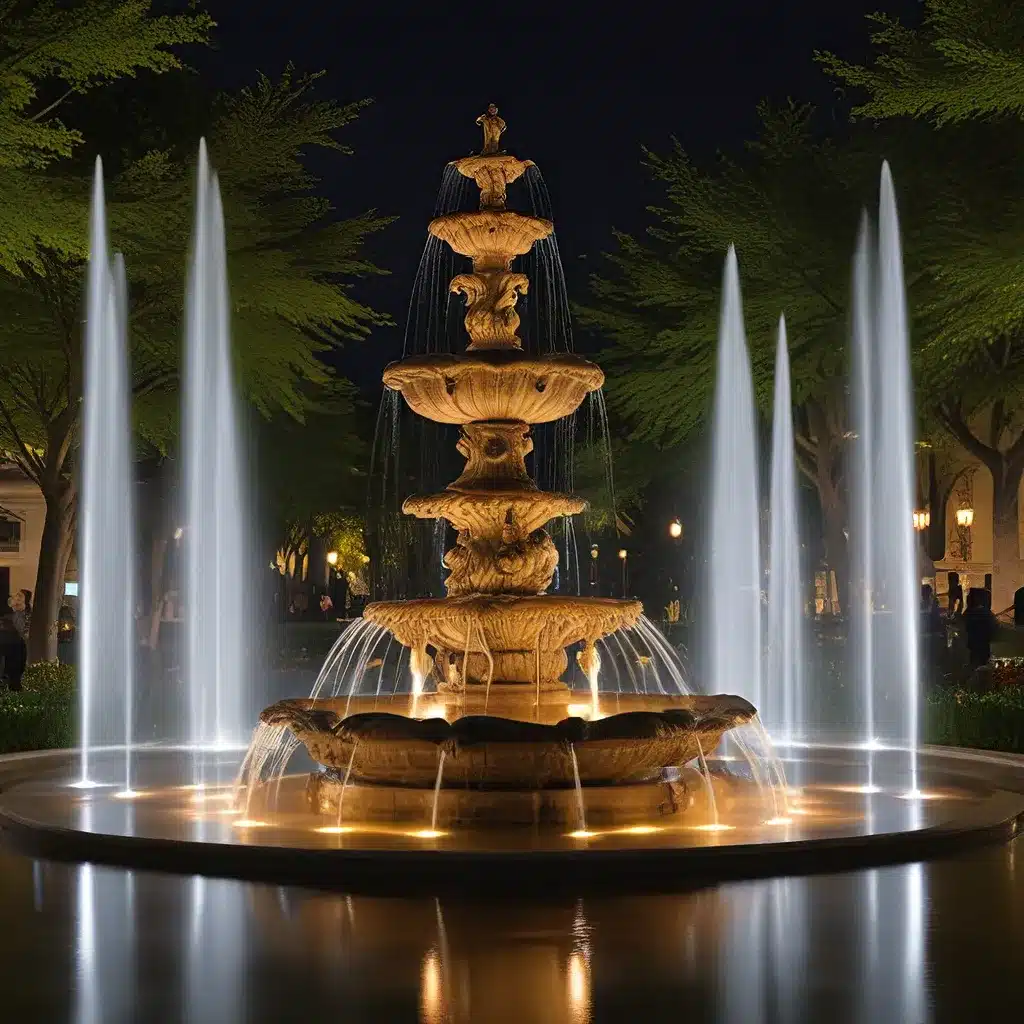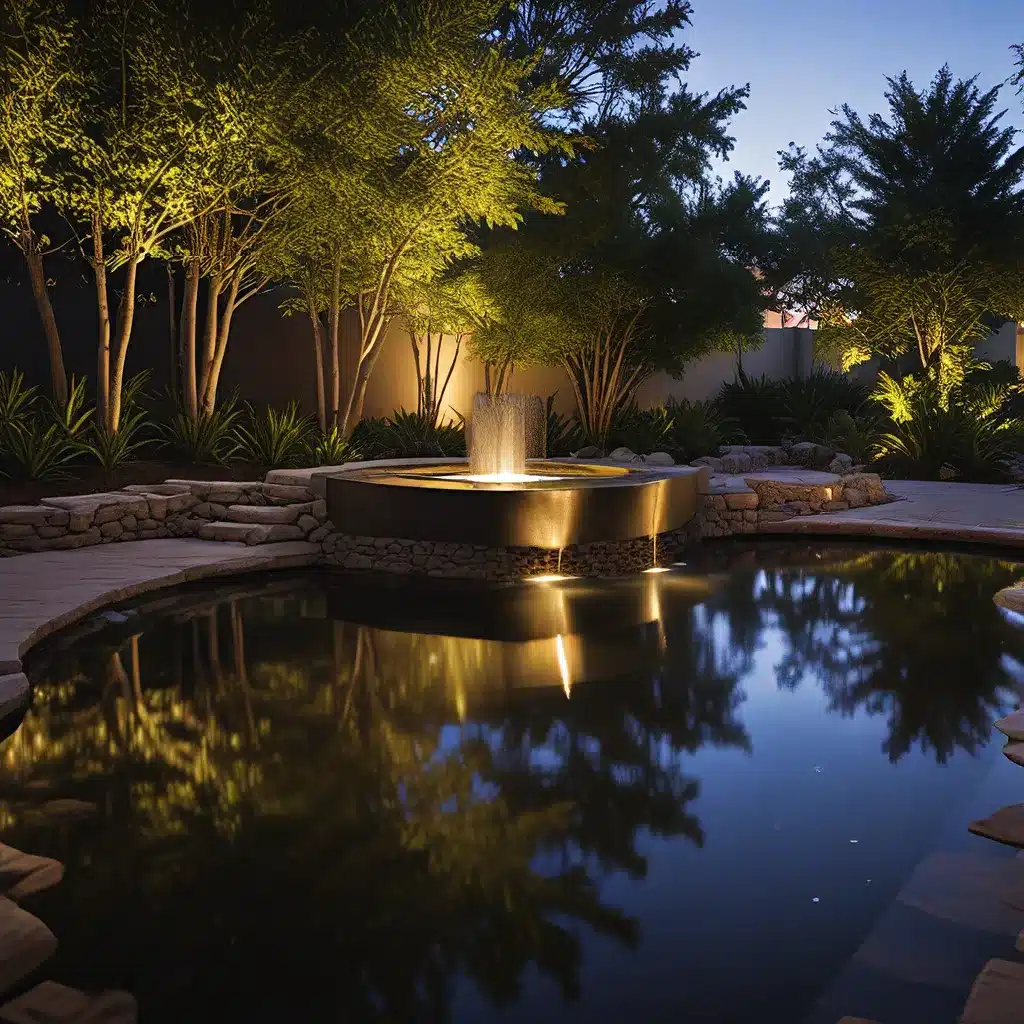
Fountain Design Essentials – Welcome to Fountain Lights
Fountain Design Essentials – Welcome to Fountain Lights

As a self-proclaimed fountain lighting enthusiast, I’ve always been captivated by the ways in which light can transform the atmosphere and ambiance of outdoor water features. Whether it’s the mesmerizing play of shadows across a rippling surface or the shimmering radiance of submerged illumination, the interplay between water and light has a magical quality that I find absolutely enchanting.
But my fascination with this topic goes beyond mere aesthetics – I’m deeply intrigued by the scientific and psychological underpinnings of how we experience the natural world, and how we can leverage those insights to create built environments that nurture our well-being. You see, there’s a growing body of research that suggests our innate biophilia – our instinctive connection to nature – has profound implications for human health and happiness.
According to the biophilia hypothesis, first coined by social psychologist Eric Fromm and later popularized by biologist Edward Wilson, we as a species have an inherent desire to reconnect with nature and natural systems. This idea is supported by a wealth of empirical evidence demonstrating the myriad ways in which exposure to natural environments – whether real or simulated – can positively impact our cognitive, psychological, and physiological well-being.
For instance, studies have shown that simply viewing scenes of nature can induce a state of physiological relaxation, as evidenced by lowered blood pressure and heart rate, reduced stress hormones, and improved mood. Other research has highlighted the restorative effects of natural sounds and tactile experiences with elements like water and vegetation, suggesting that multi-sensory engagement with the natural world can have a compounding positive impact.
Intriguingly, the benefits of biophilic experiences don’t seem to diminish over time – in fact, repeated exposure to natural stimuli has been shown to sustain our interest and attention in a way that artificial environments often struggle to match. This may be due in part to the inherent complexity and variability of natural systems, which align with our evolutionary predisposition to seek out information-rich environments that offer both clarity and mystery.
So what does all of this mean for the way we design our built environments, particularly when it comes to the incorporation of water features and lighting? Well, the implications are quite profound. By thoughtfully integrating biophilic design principles into our fountains, ponds, and other water-based installations, we have the opportunity to create spaces that not only delight the senses, but also actively nurture the mind and body.
At the heart of this approach is the idea of connecting people to nature, whether through direct physical and sensory engagement or through more indirect, symbolic representations. This might involve strategies like:
The key is to strike a careful balance – crafting environments that are rich in sensory information and visual complexity, but not to the point of overwhelming or fatiguing the user. After all, the ultimate goal is to create a sense of calm, restoration, and rejuvenation – a respite from the often-frenetic pace of modern life.
This is where the art of fountain lighting truly shines. By thoughtfully integrating dynamic lighting techniques into the design of water features, we can elevate the biophilic experience in profound and compelling ways. Imagine, for instance, the way a gently pulsing underwater light might evoke the rhythmic flow of a natural spring, or how strategically placed spotlights could cast dancing shadows that mimic the dappled sunlight filtering through a forest canopy.
And the possibilities don’t end there. Advancements in color-changing LED technology allow us to subtly shift the hues and tones of a fountain’s illumination, reflecting the natural chromatic shifts we witness in the world around us. Meanwhile, synchronized lighting choreographies can be used to replicate the chaotic yet captivating movement patterns* of wind, water, and wildlife.
Ultimately, the art of fountain lighting is about more than just creating visual spectacle – it’s about harnessing the power of light to forge a deep, meaningful connection between people and the natural world. By weaving biophilic principles into the very fabric of our water feature designs, we have the opportunity to craft spaces that not only delight the senses, but also nourish the mind and body.
Of course, replicating the rich complexity of the natural world is no easy feat. Our environments are often far more ordered and predictable than the ecosystems we seek to emulate, and striking the right balance between clarity and mystery can be a delicate dance.
But I believe that’s precisely where the true artistry of biophilic design lies – in our ability to capture the essence of nature’s dynamism and unpredictability, while still maintaining a sense of comfort and safety for the user. It’s about embracing the inherent complexity of the natural world, and finding creative ways to translate that onto the human scale.
And as our understanding of biophilia and its impacts on human health continues to evolve, I suspect we’ll see ever-more innovative and sophisticated approaches to incorporating natural elements into our built environments. Perhaps we’ll even witness the emergence of new lighting technologies and control systems that allow for even more nuanced and responsive interactions between water, light, and the people who experience them.
The way I see it, the potential for biophilic fountain design is virtually limitless. By tapping into our deep-seated affinity for nature, we have the power to transform the way people engage with and experience the outdoor spaces around them. And in doing so, we just might unlock new frontiers of health, happiness, and wellbeing – one radiant reflection at a time.
So if you’ll excuse me, I think I’ll go take a stroll around the nearest fountain and see what magic I can uncover. Who knows what captivating discoveries might be lurking beneath the surface?
Share to :